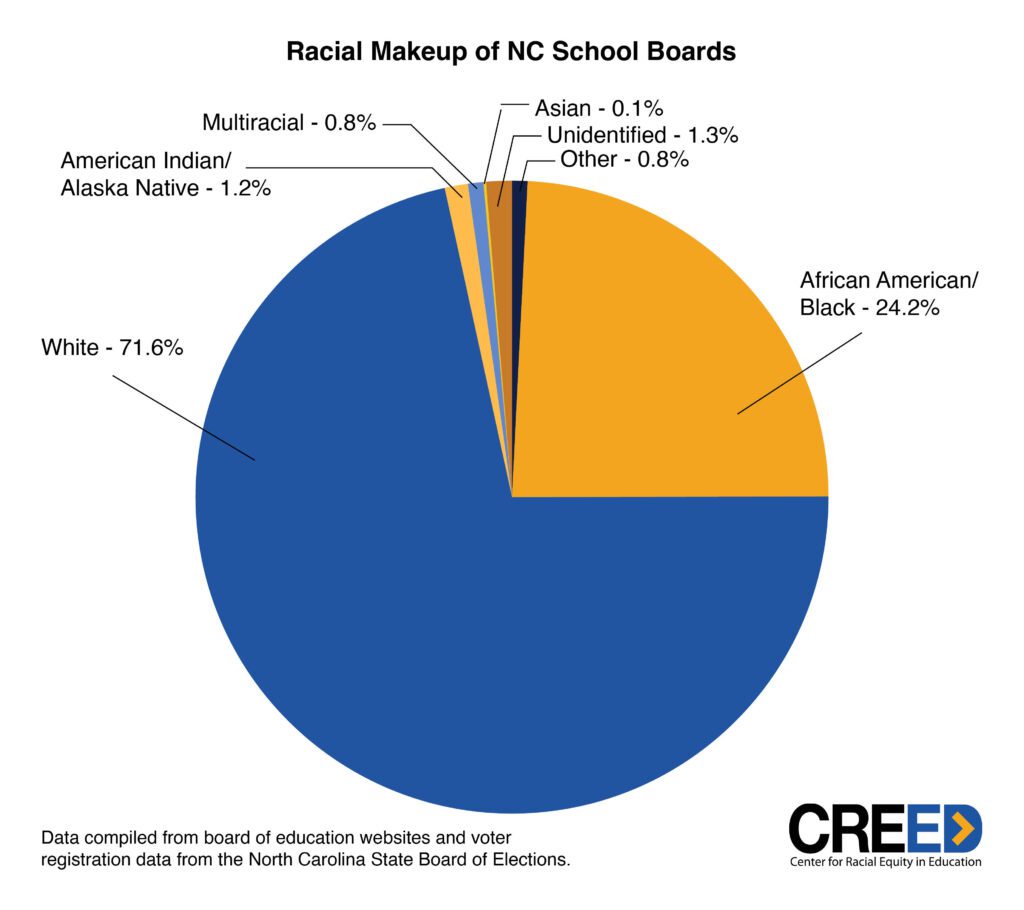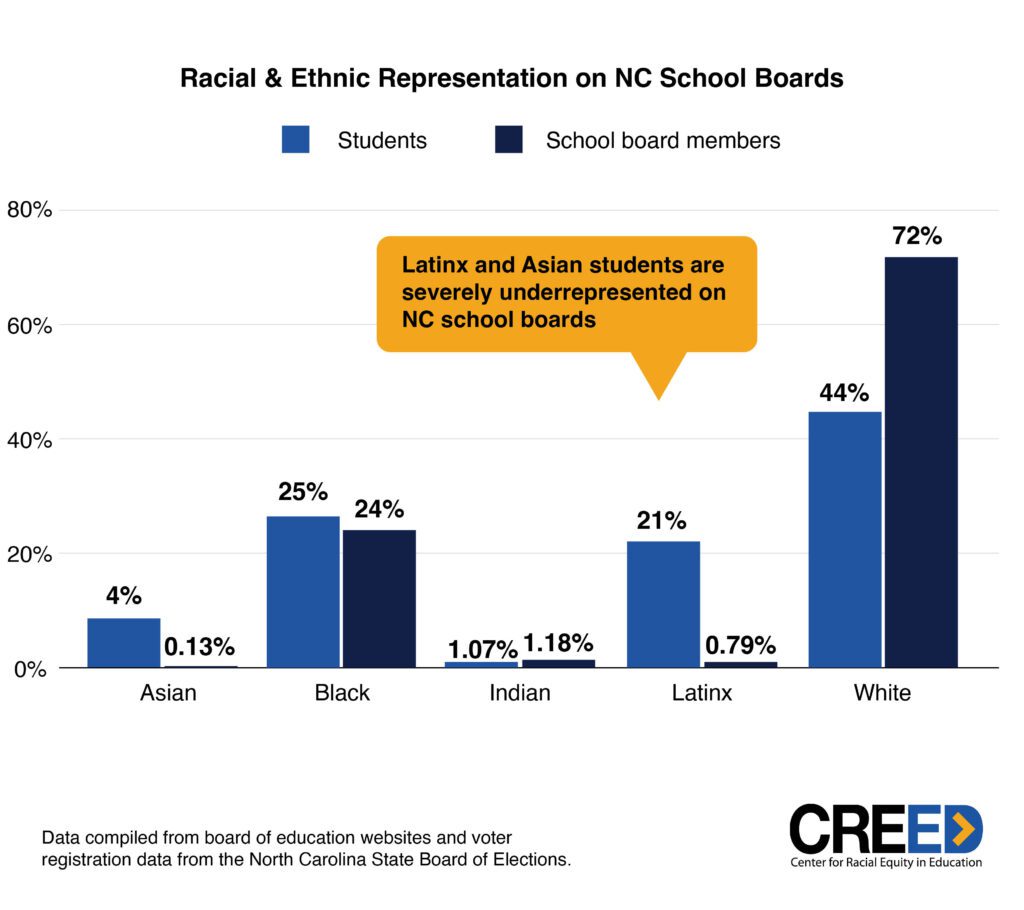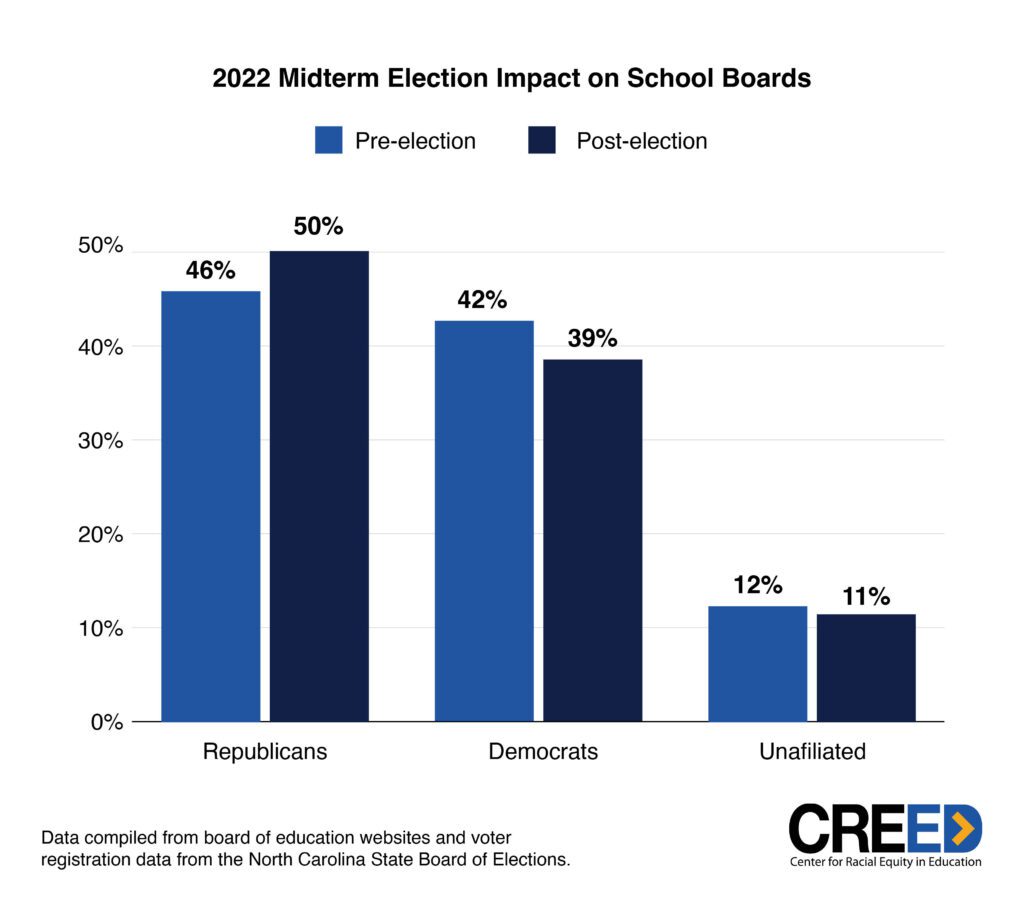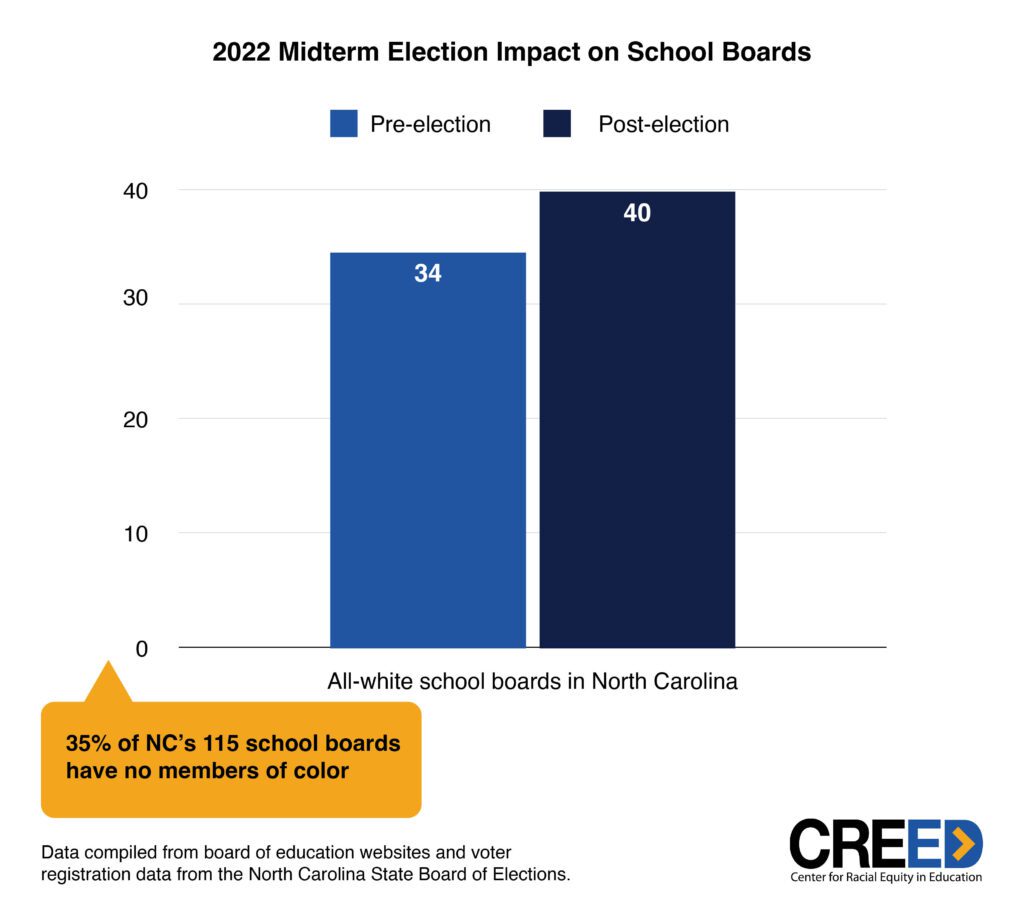
School boards hold profound power and responsibility over the direction of the schools within their districts. How school boards govern is determined by who serves on the school board; representation matters.
At the Center for Racial Equity in Education (CREED), we analyzed school boards’ makeup across the state and found women and people of color lost representation after the 2022 midterm elections. We also found LatinX and Asian students are the most underrepresented on school boards.
School boards establish the vision and goals for the public schools in their districts with the support of the local community that elects them. School boards make important decisions and set standards for the performance of schools and superintendents. They also manage the district’s finances and implement state education policies. While states and the federal government provide the pathway and general policy direction, local school boards oversee day-to-day decision-making, staffing, organization, and policy implementation.
It is critical that school board members understand the experiences of the students within the classrooms and schools they serve, especially if board members are to ensure an equitable and inclusive experience for all students. The need for representation is critical for school board members to determine whether a district will have a diverse staff of school administrators and teachers — a key factor in educational experiences and outcomes for students of color.
The need for representation in North Carolina
CREED defines representation as an active and ongoing process that requires education policymakers to advocate for more diverse educators, more equitable curricula and policies, and to become more responsive to the needs of marginalized students and communities.
School board members are uniquely positioned to drive equitable change that meets the needs of every student and to counter the effects of institutional racism and inequities. For example, a 2021 study that investigated how the racial and ethnic composition of school boards affects school district administration and student achievement found that greater minority representation on school boards can increase student educational achievement, even when a minority electoral victory does not lead to a majority-minority board. Furthermore, this study found that an increased minority representation improves student performance for both white and minority students.
Despite North Carolina’s K-12 student population rapidly diversifying, school boards across the state are not as diversified or representative of its students. According to new data from CREED, students of color make up 56% of public school enrollment even though only 27% of school board members identify as persons of color. In the November 2022 midterm elections, approximately one-third, about 290 school board seats, were up for election across North Carolina. In 47 school districts, a majority of their school board was up for election, resulting in a shift of power in these school districts.
CREED studied school board makeup across North Carolina using data from the North Carolina State Board of Elections voter registration files, which contain the most up-to-date publicly available information for individuals registered or formerly registered to vote. The data were matched with school board members’ names and addresses collected from school board websites. The result is a snapshot of the level of representation of North Carolina’s school boards before and after the 2022 midterm elections.
Age and gender
The average age of North Carolina school board members prior to the 2022 midterm election was 59 years old, but it lowered to 57 following the election. The three school districts with the oldest average ages were Anson (69), Beaufort (69), and several districts with an average age of 68 (Edgecombe, Halifax, Hoke, and Vance).
The youngest school boards in the state are Durham (42), Camden (44), and Wake (46). The youngest school board member in North Carolina is 26-year-old Brandon Johnson from Greene County Schools, and the oldest board member is 88-year-old Richard “Kimsey” Jackson of Transylvania County Schools. School boards are 53% male, 45% female, and 2% of board members did not indicate gender on their voter registration. Two school boards are all-female (Hoke and Warren), while six are all-male (Bladen, Cleveland, Columbus, Surry, Watauga, and Yancey).
Race and ethnicity, and political affiliation
The majority of school board members in North Carolina are white (72%), and more than one-third (35%) of school boards are all-white. Meanwhile, nearly one-quarter (24%) of school board members identify as Black, less than one percent (0.79%) identify as Hispanic/Latinx, 1.18% identify as American Indian, and only one out of 762 school board members (0.13%) is Asian. Less than 1% (0.79%) of board members identify as multiracial, meaning two or more races, and none identify as Native Hawaiian or Pacific Islander.

Statewide, Asian and Latinx students are severely underrepresented on school boards, as Asian and Latinx students make up 4% and 21% of school enrollment, respectively. While Black students and Black school board members are proportional statewide, there are several school districts where the numbers are imbalanced.

When it comes to political party affiliation, half of school board members in North Carolina are registered Republicans, about 39% are Democrats, and 11% are unaffiliated.

The impact of the 2022 midterm elections
Based on the 2022 midterm elections, North Carolina’s school boards have become slightly younger, more white, and more male, while women and people of color lost representation. The number of all-white school boards jumped from 34 to 40. Exactly what these changes will mean for North Carolina’s public school students remains to be seen. As lawmakers in the General Assembly debate bills like House Bill 187, which might severely restrict what and how educators teach, the role of school board members is ever more crucial.

The significance of this statewide data is not to point out the obvious lack of representation of people of color but to highlight the importance of this issue by recognizing the political power school board districts hold and the importance of representation.
School Board Partners suggests school boards must work towards equitable representation by recruiting, training, and retaining members for school boards that are diverse and representative of the communities they serve, ensuring school boards are committed to equity for all students, and facing and acting on the righting of historical and ongoing injustices.
In order for North Carolina’s public schools and policymakers to be more representative of the needs and concerns of the students, parents, educators, and communities of color that they serve, school boards must evolve into change agents. And to attain true democracy, school boards must dismantle the racist systems and structures they helped to establish and maintain.
Mary Herdelin and Sode Smith of Davidson College were instrumental in compiling the data for this project.




